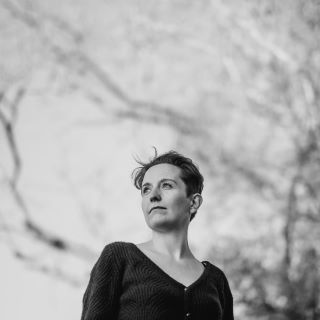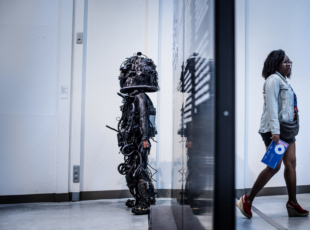The Matilda effect, or the usurped glory of women in the sciences

Article author :
The Matilda effect describes the process whereby men appropriate the intellectual work of female scientists and then bask in the attendant praise, at the expense of the women involved, who are sidelined and forgotten over the course of history.
If you are asked to provide the name of a well-known women scientist, it is often Marie Curie and Ada Lovelace who come to mind. Both clearly stand out as outliers in history. But how is it that women, of whom for a start there are too few in the domain of sciences, are categorically expunged from the collective imagination?
Women for the arts and men for maths
Two interrelated phenomena may explain this wretched state of affairs. First of all, from the 17th to the 19th century, the education of women was limited: those from the working classes had jobs from a very young age to survive whilst bourgeois women were restricted to the roles of mothers, wives and housekeeping workers – a nod and a wink to The Handmaid’s Tale. The schools took in only a few young girls and, when they were permitted to study, the science domains were reserved principally for boys. In short, if you were mad about maths, you needed dosh, a supportive family, contacts, to be armed with courage and have a fiery answer for everything – Spoiler alert: it is still often the case in 2024.
Alongside this societal reality gender stereotypes must be considered: women are expected to be gentle, quiet, conscientious and sensitive. Men are more regarded as strong, logical, tenacious. It therefore seems obvious that women opt for artistic, literary and care provision subject areas, whilst men choose construction, engineering and the sciences.
Don’t go believing that this was a long time ago: in 2022, merely 27% of the girls in secondary education said that they were interested in STEAM (Sciences, Technologies, Engineering, Arts and Maths). Julie Henry, a Doctor of computing and sciences education, is astonished: ‘in primary school, two-thirds of the children are interested in science. Yet, in secondary school courses, the percentage of girls interested in these subjects drops dramatically.’
Portraits of forgotten female scientists
So, to give young pupils the incentive to boost their tech-sciences-math potential, the educational podcast studio ‘Graines de son’ has imagined a project: telling the story of forgotten female scientists. These one-day events challenged gender stereotypes in daily life as well as in the professions. After engaging in long debate, each class was asked to take to the microphone and recount the fascinating lives of one of the victims of the Matilda effect.
A close-up portrait of each of these badass women!

Sophie German was born in the eighteenth century. Despite the disapproval of her parents, she continued to educate herself in secret. At the age of 18, she hoped to enrol at the École Polytechnique, but women were not admitted there. Hell-bent on continuing, she managed to procure the courses from a student and passed herself off as him: Antoine Auguste Le Blanc. Her teacher, Lagrange, impressed by her work, sought out this ‘Le Blanc’. When she introduced herself, Sophie also revealed her identity. Lagrange subsequently became her mentor. Sophie would use the same stratagem to have Carl Friedrich Gauss read her theory of numbers. Her incredible mathematical research contributed to the construction of the Eiffel Tower. Yet, on her death in 1831, the state registrar recorded in the national register that she was a woman without employment, and her name would never be inscribed on the Parisian monument.

Gladys West was born in 1930, in Virginia, to a very poor Afro-American family. Despite racial segregation, she excelled at school and developed a passion for mathematics. She obtained a grant to attend university and worked as a nanny to afford accommodation. In 1952, she was awarded a Master’s and became a maths teacher. In 1955, she joined the Naval Proving Ground, where she met her husband and began a career in computer programming. She would be personally headhunted to work on the IBM7030, the world’s most powerful computer at the time. Her research enabled the Earth to be modelled with great accuracy, contributing to the creation of GPS. Whilst her incredible work remained unrecognised for decades, she was finally acknowledged in 2018 and inducted into the US Air Force Hall of Fame.

Rosalind Franklin was born in 1920 in London into a rich Jewish family. Encouraged by her mother, she studied chemistry at Cambridge. After her degree, she completed a thesis in physics and chemistry on X-rays. In 1950, Rosalind enrolled at King’s College London and entered a frantic race to discover DNA. She worked with a man she had little liking for. Maurice Wilkins was by nature reserved, not much of a talker. Rosalind, on the other hand, was feisty, loved a debate and was tenacious! Several years later, due to her expertise in X-rays, she discovered that DNA has a double-helix structure. Wilkins seized her work and, without her consent, passed it onto two rivals: Watson and Crick. The three men published under their names and were awarded the Nobel Prize in 1962, without mentioning Rosalind.

Annie Jump Cannon was born in 1863. Encouraged by her mother, she developed an interest in sciences and used the family observatory to study the stars. After excelling in her studies at Wellesley College, she temporarily stepped aside from the sciences to focus on photography. At the age of 30, she contracted scarlet fever and lost much of her hearing. The death of her mother pushed her to return to astronomy. Hired as a human computer at the Harvard Observatory, she classified thousands of stars, becoming a world expert. Her star classification system is still used today.

Mileva Maric was born in 1875 in Serbia. Fascinated by mathematics and the sciences from an early age, she studied at various prestigious establishments, often reserved for boys, thanks to the privileged contracts of her military father. In 1896, she enrolled at the University of Zurich, where she met Albert Einstein. Their love affair began and, even though brilliant, Mileva put her studies on pause. Becoming pregnant and being a mother was an obstacle to her. She thus brought an end to her studies, but tirelessly aided her husband in his.
Numerous testimonies prove that Mileva contributed greatly to the theory of relativity. Einstein denied this, wishing to reap all the compliments for himself. She received the money for the Nobel Prize from Albert – damn it! – but when all is said and done, she was never publicly recognised.
Let us quickly put your minds at ease: we are working hard to create a new salvo of podcasts on the Matilda effect! So, whose woman of science story would you like to hear in the next episodes? We are waiting for your recommendations!
A story, projects or an idea to share?
Suggest your content on kingkong.





